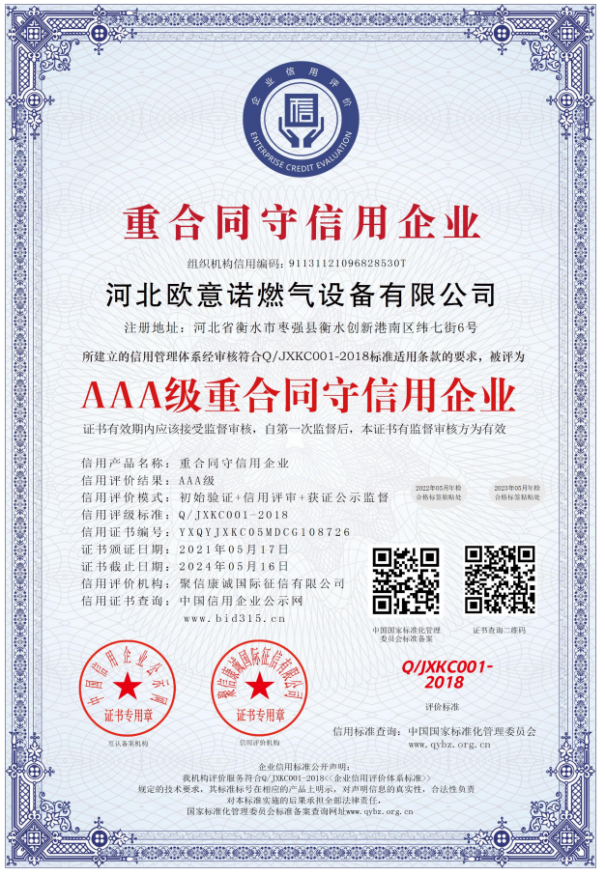
Dec . 07, 2024 13:33
Back to list
natural gas pressure reducing valve
Understanding Natural Gas Pressure Reducing Valves
Natural gas is a crucial energy source used in various applications, from heating homes and cooking to fueling industrial processes. A vital component in managing natural gas distribution is the pressure reducing valve (PRV). This device ensures a steady and safe flow of natural gas by reducing high inlet pressure to a desired outlet pressure suitable for consumption. This article aims to provide an overview of natural gas pressure reducing valves, their operation, types, applications, and importance in gas safety and efficiency.
The Role of Pressure Reducing Valves
Natural gas arrives from the supply source, often at high pressures that can exceed 100 psi (pounds per square inch). Such high pressures are unsuitable for residential or commercial use, where the required pressure typically ranges between 4 to 7 inches of water column (about 0.14 to 0.25 psi) for appliances like furnaces, water heaters, and stoves. A PRV is essential in transforming this high pressure to a manageable level, ensuring consistent performance and safety.
These valves work automatically, responding to fluctuations in inlet pressure and adjusting accordingly to maintain the desired outlet pressure. This automatic regulation is crucial, especially in applications where gas demand varies. By maintaining a stable pressure, PRVs protect downstream equipment from damage caused by overpressure, enhancing the overall reliability of gas systems.
Types of Pressure Reducing Valves
Several types of pressure reducing valves cater to different needs and applications. The most common types include
1. Direct-Operated Pressure Reducing Valves These are the simplest form of PRVs, typically used in residential applications. They rely on a spring mechanism that responds directly to the pressure changes in the system. When the pressure exceeds a preset level, the valve opens to allow gas to flow, reducing the pressure downstream.
2. Pilot-Operated Pressure Reducing Valves More complex than direct-operated valves, pilot-operated PRVs use a pilot valve to control the main valve. This design allows for more precise pressure regulation and is suitable for larger systems where pressure fluctuations can be significant. The pilot valve senses outlet pressure and adjusts the main valve accordingly.
3. Electronic Pressure Reducing Valves These modern valves are equipped with sensors and electronic controls, providing real-time monitoring and adjustment of gas pressure. They offer greater accuracy and can be integrated into smart gas management systems.
natural gas pressure reducing valve

Application and Importance
Pressure reducing valves find applications in a variety of settings, from residential buildings to natural gas pipelines and industrial facilities. In residential applications, they ensure appliances operate safely and efficiently. In industrial contexts, PRVs are vital for protecting equipment and maintaining optimal operating conditions.
The importance of pressure reducing valves extends beyond mere functionality. They play a significant role in ensuring safety. High-pressure gas can lead to catastrophic failures if not managed effectively. PRVs mitigate this risk by preventing excessive pressure buildup, helping to avoid leaks, explosions, or equipment damage.
Moreover, PRVs contribute to energy efficiency. By stabilizing gas pressure, they reduce wastage and enhance the performance of appliances. This efficiency not only lowers energy costs for consumers but also supports environmental sustainability by minimizing excess natural gas flaring.
Maintenance and Considerations
Regular maintenance of pressure reducing valves is essential to ensure their optimal performance. This includes periodic inspections for wear and tear, testing the functionality of the mechanism, and ensuring there are no leaks. Operators must be aware of the specific requirements for the type of PRV in use, as different designs may have unique maintenance needs.
When selecting a PRV, factors such as inlet pressure, desired outlet pressure, flow rate, and specific application requirements should be considered. Proper sizing and selection ensure that the valve operates efficiently and meets safety standards.
Conclusion
Natural gas pressure reducing valves are indispensable components in the natural gas distribution system. By lowering high-pressure gas to safe and usable levels, these valves play a critical role in ensuring the safety, efficiency, and reliability of natural gas systems. Understanding their function, types, applications, and maintenance is essential for anyone involved in the energy sector, helping to uphold safety standards and improve overall system performance.
Next:
Latest news
-
Safety Valve Spring-Loaded Design Overpressure ProtectionNewsJul.25,2025
-
Precision Voltage Regulator AC5 Accuracy Grade PerformanceNewsJul.25,2025
-
Natural Gas Pressure Regulating Skid Industrial Pipeline ApplicationsNewsJul.25,2025
-
Natural Gas Filter Stainless Steel Mesh Element DesignNewsJul.25,2025
-
Gas Pressure Regulator Valve Direct-Acting Spring-Loaded DesignNewsJul.25,2025
-
Decompression Equipment Multi-Stage Heat Exchange System DesignNewsJul.25,2025

